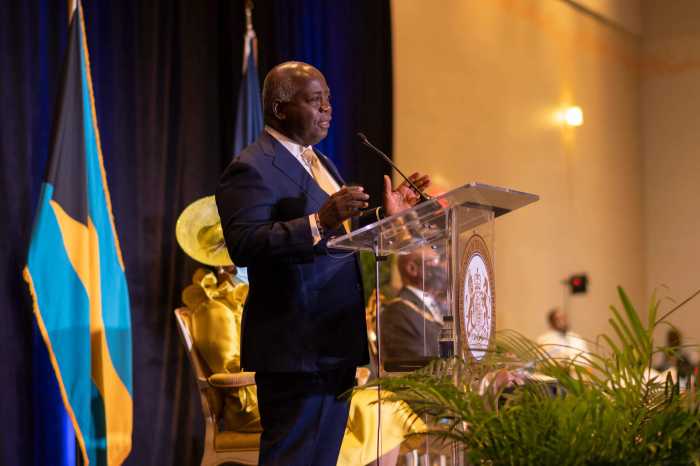HAVANA, July 6, 2011 – “I want to meet @salvatore300 and @elainediaz2003” was a comment overheard at #TwittHab, the first meeting in Cuba of social network users. After years of being connected only via the web, the internet is now being used to facilitate real-world contact between citizens of this socialist island nation.
“Social encounters and meetings can be organized spontaneously, without the tutelage of the Cuban institutions. They just take place, and nothing bad happens: there is no need to fear,” Rogelio M. Díaz, the author of the blog Bubusopia and one of the participants at an unusual “Twitterfest” in Cuba that kicked off July 1, told IPS.
Political tensions between the Cuban government and its historic enemy, the United States, and continuing frictions with groups of political dissidents, who also use blogs and social networks to express their views, create a complex climate for initiatives of this kind.
However, on the afternoon of July 1, on the corner of 23rd and 12th Streets in downtown Havana, some 35 faces, mostly young but some not so young, came out “from behind the @,” as one of the slogans for the meeting invited Cuban Twitterers to do.
Convened by Leunam Rodríguez, the administrator of the Radio Cubana portal, the meeting was one of three that took place the same afternoon in the Cuban capital. It inspired reactions in the eastern province of Holguín, and gave rise to several more meetings in cultural centres and nightspots in Havana, “to carry on talking and getting to know each other,” over the whole weekend, as one participant told IPS.
The original idea for #TwitterHab arose in mid-June and spread swiftly through blogs and social networks like Twitter and Facebook. The goal of the “real life, friendly” get-together was to have an opportunity to get to know the faces, people and thoughts behind on-line identities such as @alondraM (“larkM”) and @cuba1erplano (“Cuba Foreground”).
Without a specific agenda and just for the sake of sharing, the creativity of university students, journalists, bloggers and professionals in the computing world gave rise to posters and name tags combining Twitter visualisations with Cuban symbols such as the trogon (tocororo), the national bird.
“Come out from behind the @ now!” and “I want to get to know you” were the invitations that circulated in cyberspace. But some people unconnected with the organization, as well as some mass media outside Cuba, put a political interpretation on the friendly social meeting’s aims, according to observers.
“It was actually only a group of young people who wanted to meet and get to know each other. It was not even close to being political,” blogger and psychologist Sandra Álvarez, whose Twitter name is @negracubana” (“Afro-Cuban woman”) and who attended the meeting at 23rd and 12th Streets, told IPS.
According to Elaine Díaz, author of the blog La Polémica Digital (Digital Controversy), needless politicisation “distorts the original goals of the initiative.” The day before #TwittHab, Leunam Rodríguez announced a change of venue, to the Cuba Pavilion in the central Havana neighbourhood of Vedado.
The Asociación Hermanos Saíz, a non-governmental cultural organization for young artists, which has its headquarters in the pavilion, offered computers with internet access for the event. The main organizer, Rodríguez, with members of the blog La Joven Cuba (Young Cuba) and representatives of the self-styled alternative Cuban blogosphere, showed up there.
Hours later, some of the people who had been at either of the two locations went to a Havana park by the Amadeo Roldán theatre, and together addressed the issue of communication and the aspirations for better connectivity on a mass scale in the country, which could be possible thanks to a fibre optic cable that has been laid with Venezuelan support.
A 2010 nationwide survey of 38,000 households by the National Statistics Office (ONE) found that only 2.9 percent of respondents said they had surfed the internet in 2009. Of those, 59.9 percent used the internet from their educational centre, 7.4 percent from their workplace, and 5.9 percent at home.
At the park, nearly 100 people who had earlier gone either to the Cuba Pavilion or to the corner of 23rd and 12th streets fulfilled their common dream of “getting to know one another and sharing experiences.” A homemade video, to be posted on YouTube, was made of everyone introducing themselves, along with their online name tags.
This spontaneously agreed third venue was a place where dialogue and debate flowed freely about several concerns, including how to achieve inclusion for people in Cuba, whatever their political convictions, who want to offer their personal views through social networks and blogs.
“I don’t need an introduction: I am the father of Twitter in Cuba,” said Roger Trabas, @roger213tm, when it was his turn to face the camera.
Trabas was the second Cuban, in early 2008, to open a Twitter account, a social network that contains a mixture of “people who live in the world, and other people who want to change it,” the group of participants agreed. (IPS/GIN)

























